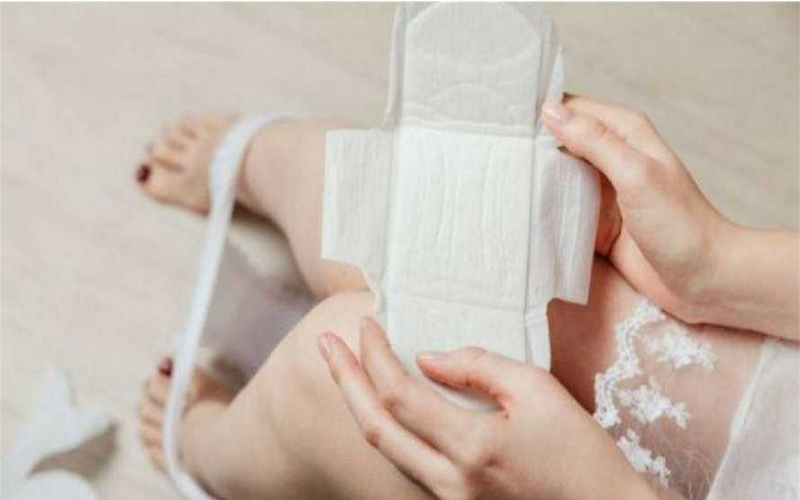What are Maternity Pads? Many women experience bleeding after birth, and this is perfectly normal. Your body has a natural process of getting rid of the blood that’s no longer needed to nourish your baby. it just happens sometimes when we give birth, but don’t worry because there are various ways you can stop any leaks!
Maternity pads will soak up most if not all liquid so you’ll feel dry while wearing them underneath clothing like dresses or skirts. There are other types of maternity pads including nursing pads which help prevent breast milk from leaking onto clothes because they have extra-absorbent material inside of them.

Why do I need these maternity pads?
When you give birth, it is not uncommon for your vagina to experience vaginal bleeding and discharge. This is known as lochia because the blood comes from where the placenta was attached during pregnancy. The body needs to get rid of any additional tissue that nourished the baby in case there’s any leftover after he/she has been delivered by cutting off this excess flow through menstruation.
How long does this bleeding last?
After giving birth, the first 10 days are generally a time of heavy bleeding. This may include some blood clots and even vaginal tears if you had surgery during labour or experienced tearing when pushing out your baby’s body from inside of you.
By day three or four most women will notice lighter pinkish-coloured spotting as their bodies adjust themselves back into shape after delivering this new life form into our world.
Then again by six weeks postpartum any active woman could potentially experience light periods with dryer mucous membranes due to all those healthy endorphins flowing through them.
Breastfeeding can be a difficult task for new mothers. While it provides many health benefits, there are some downsides as well that you should know about before deciding to breastfeed your baby or not: Your bleeding during this time will likely feel heavier than usual due in part because when breastfeeding causes the uterus (womb) inside of us contract which pushes out more blood and tissue from our bodies; sometimes we might even get period-like cramps.
How long should I wait before changing my maternity pad?
After giving birth you may need to change your pad every hour or two, depending on how much blood is coming out. Your flow should lighten over the next few days after labour ends and this will mean that eventually, one small sanitary napkin should be enough for the entire day-time hours of wear (8 pm – 6 am).
Although it’s a good idea during those first few weeks following childbirth not only to take care of any infection concerns but also keep all wounds clean by bathing at least once per day.
What are the best maternity pads?
Maternity pads come in all sorts of shapes and sizes. Some are made with aloe Vera, providing extra comfort for you during your time of need while other brands offer wings on their product to make sure it stays securely placed against the body’s curves without moving around too much. But ultimately there is no one size fits all when it comes down to this type of product because everyone has different flow rates throughout pregnancy.
Can I use sanitary pads in place of maternity pads?
Maternity pads are longer, thicker, and softer than sanitary products. They’re designed to be more absorbent than the old-fashioned tampons so you don’t have any uncomfortable leaks or spills when wearing them out in public!
The best part about these is they won’t irritate your delicate skin like other menstrual hygiene options can sometimes do; not only will it feel better but its less prone to risk infection as well due to this being an extra layer between yourself and whatever dirt happens walk by on accident while menstruating.
How many maternity pads do I need?
You’ll probably be bleeding for a few days after giving birth. Make sure you have enough pads because they can get messy and there’s no telling when the next set of underwear will show up!
Maternity pads should be replaced every 3-4 hours, but it is normal at first for mothers to change their pad more often than this until things settle down with breastfeeding or other tasks that take priority over sanitary napkins.
What are Nursing pads?
Breastfeeding is a wonderful bonding experience that women thrive on. Breast pads are designed for when you need to stop leaks, leak-free! Nursing Pads absorb any milk from escaping your body and can make life with two breasts much more comfortable by soaking up this liquid gold so we don’t have stains all over our clothes or sheets at night after feeding time is done.
How do I dispose of maternity pads?
To make sure your used pad gets disposed of properly, throw it in the wrapper with a new maxi-pad or wrap. You can use toilet tissue for disposal if you don’t want to reuse this product!
Conclusion
Maternity pads are your best friend during this time. You will probably be using them most of the day tonight, as you go through heavy periods and light ones that eventually end altogether- it’s all about finding what works for each person! For starters, I would recommend getting maternity maxi pads since they have been designed specifically with very heavy bleeding in mind.
